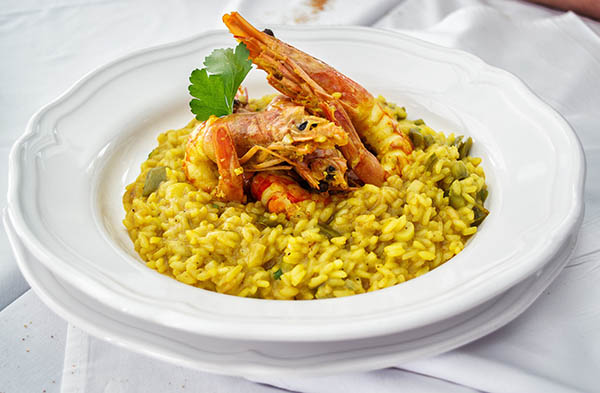Ounce by ounce, saffron is one of the world’s most expensive foods, if not the most expensive food.
The riotous yellow, heady spice found primarily in Mediterranean, North African and Middle Eastern dishes can run anywhere from $5,000 to $10,000 per pound. By comparison, highly prized Japanese Wagyu beef runs only in the low $100 range per pound, and even the most luxurious osetra caviar tops out around the $2,000 per pound mark.
Fortunately, a little saffron goes a very long way, much more so than those other expensive goods, and mere fractions of grams of saffron can infuse a variety of dishes with its vivid, flavorful character. It will seem to stick out in an expensive way in your local spice aisle, but low double digits for a bit of saffron seems a small price to pay for the kind of luxury and nuance it imparts.
But what is saffron, anyway? Here’s everything you need to know about the spice and how to incorporate saffron into your cooking repertoire.
Related Recipe: Chicken Tagine with Couscous
What is Saffron?
The threads or strands of saffron are actually the stamen of a flower — crocus sativus — that thrives in hot climates. It’s not the rarity of the flowers themselves that makes saffron so expensive, small geographical range notwithstanding, but their brief calendar window for blooming, low yield and human labor cost needed for harvesting those fragile bits. (We’re talking painstaking work with tweezers here, not magical stamen-extracting machines.) The threads are then dried and packaged, and should look like crimson, petal-like trumpets with a delicate yellow tendril attached.
What Does Saffron Taste Like?
In the manner of some of the world’s most complex food products — Chartreuse, truffles, etc. — saffron’s precise flavor is difficult to describe, because it is so singular. It tastes like saffron.
ICE New York's Lead Chef of Culinary Arts Barbara Rich describes the flavor by likening it to other common flavors.
“It has a light smoky aroma," she says. "But when cooked, gives off a slightly earthy and sweet flavor.”
In spite of its complexity, saffron plays remarkably well with a wide variety of other foods, from vegetables, to seafood, to meat, to saffron rice, paella being one of its signature dishes.
You can even find saffron in dessert. That it bears a biological similarity to vanilla — also the stamen of a particular flower — makes it function in a similar way; it doesn’t need to take center stage, but helps to amplify the complex qualities of every other ingredient it touches.
Related Recipe: Chef Hervé’s Rouille Sauce

Where Can I Buy Saffron?
The good news is, you probably don’t have to look too hard for saffron no matter where you live, but note that real, high quality saffron is going to require a little coin.
If you find something that seems like a great deal, back away. This will not afford you the saffron conversion experience you are seeking. Even conventional supermarket brands should run between $15 to $20 for a fraction, as in hundredths, of an ounce.
For best results, try well-reputed spice markets or online retailers where you can find out the pedigree of the saffron you are purchasing. Iranian saffron is highly sought-after, and of the highest quality, but harder to come by. Spanish and Afghan are more readily available, and still very high in quality.
When buying saffron, you should look for:
- A dark red color
- Subtle floral smell
- Whole saffron strands
Never buy pre-ground saffron, which is likely not pure saffron and rather a hodgepodge of elements including turmeric and smoked paprika. Not a terrible idea for a spice blend, but it simply isn’t real saffron.
How Should I Use Saffron?
A better question is, how shouldn’t you use saffron?
“I really do like it in risotto, often served with seafood,” Chef Barbara says, “or in broths for shellfish, or even saffron ice cream.”
In terms of how best to add it to a dish, Chef Barbara suggests to bloom the spice first in a small amount of liquid. That way, the vibrant color is sure to expand throughout the dish which is definitely one of the highlights — literally — of cooking with saffron.
How Long Can I Keep Saffron?
As with any dried herb or spice, the shelf life for maximum flavor is relatively short, but you can extend it by keeping it in an airtight container, and keep it in a cool and dry place away from sunlight.
Given its expense, you’ll want to get the most out of it as you can.






